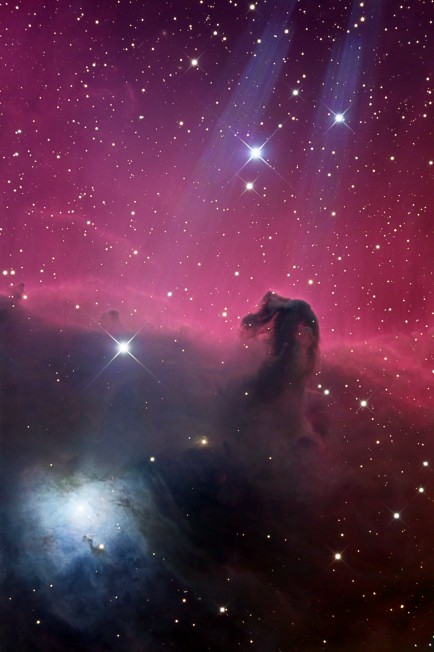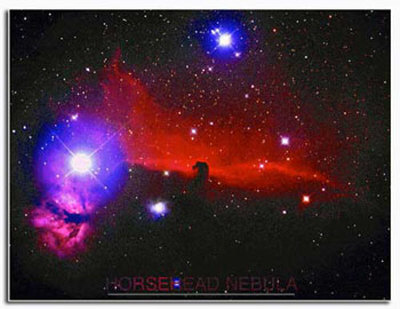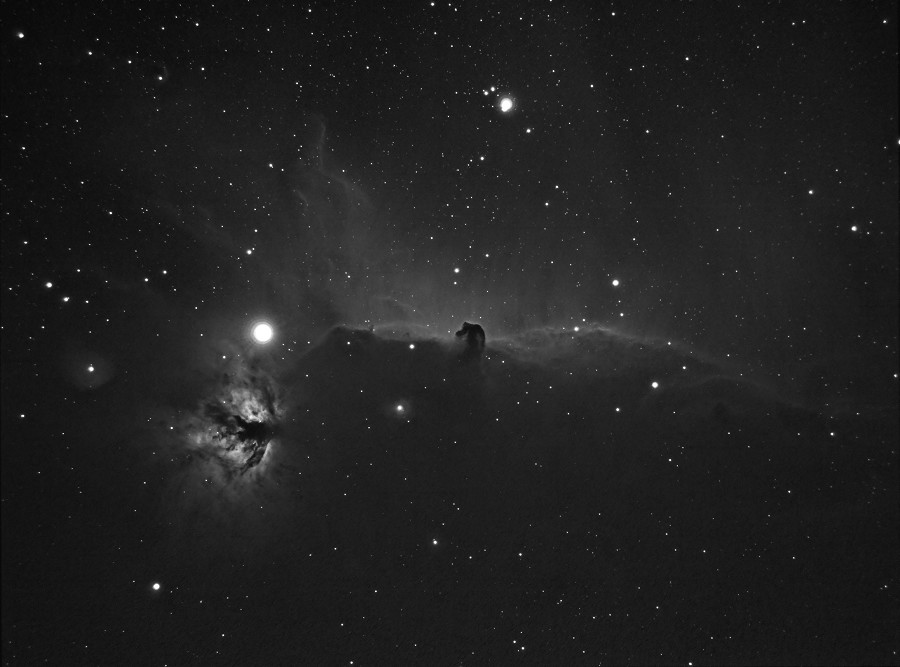Universe Today | Tammy Plotner | 2011 Feb 03
Is there any place in the night sky which stimulates our imaginations more than the famous Horsehead? This area of dark dust painted over the smokey veil of emission nebula is one of the most often photographed and visually sought-after regions in Orion. How many of us have used (or bought) a special filter just to see it with your own eyes? Then behold it once again in all of its glory – and all of its mysteries…
“I am happy to present my first image of 2011 with an object that has been long on my target list.” says astrophotographer, Ken Crawford. “This is the famous Horsehead Nebula which is formed by a dark cloud of dust and gas that forms a silhouette against the glow of IC434 behind it. There has been a lot of research done in this region because of the star forming fronts and surrounding molecular clouds with condensing areas that show up as small red clumps. These clumps are glowing red because of the rising temperatures inside are getting hot enough to be seen through the gas surrounding it as they become new stars. These condensing, glowing clumps are called Herbig-Haro objects and can be seen below the Horsehead on the left side and in the cropped image. There is a young new star in the top of the “head” area that sits in a small nebula and has the name B33-1.”
But radiation from this hot star is eroding the stellar nursery. When E.E. Barnard discovered it in 1913, he noted that the edges were “sharp” and “well defined”. Not any more. In just about a century the UV radiation of this O9 star is beginning to show its slow destruction of the cloud…. and that’s not all that is eating away at the familiar equine shape. “We find evidence for a lozenge-shaped clump in the ‘throat’ of the horse, which is not seen in emission at shorter wavelengths. We label this source B33-SMM2 and find that it is brighter at submillimetre wavelengths than B33-SMM1.” says D. Ward-Thompson, et al. “We calculate the stability of this core against collapse and find that it is in approximate gravitational virial equilibrium. This is consistent with it being a pre-existing core in B33, possibly pre-stellar in nature, but that it may also eventually undergo collapse under the effects of the HII region.”
However, destruction is not all this beautiful image reveals. “The bright nebula in the lower left is called NGC2023 and is called a reflection nebula because the blue wavelengths of light are reflected by the dust and gas around the hot blue star.” says Crawford. “There are also Herbig-Haro objects in this active region of star formation. This reflection nebula provides a beautiful contrast of textures and colors that help make the Horsehead nebula one of my all time favorites.”
Checkmate, Ken… It’s one of ours, too!
Many thanks to Ken Crawford for Imaging The Deep Sky and sharing it with us!








